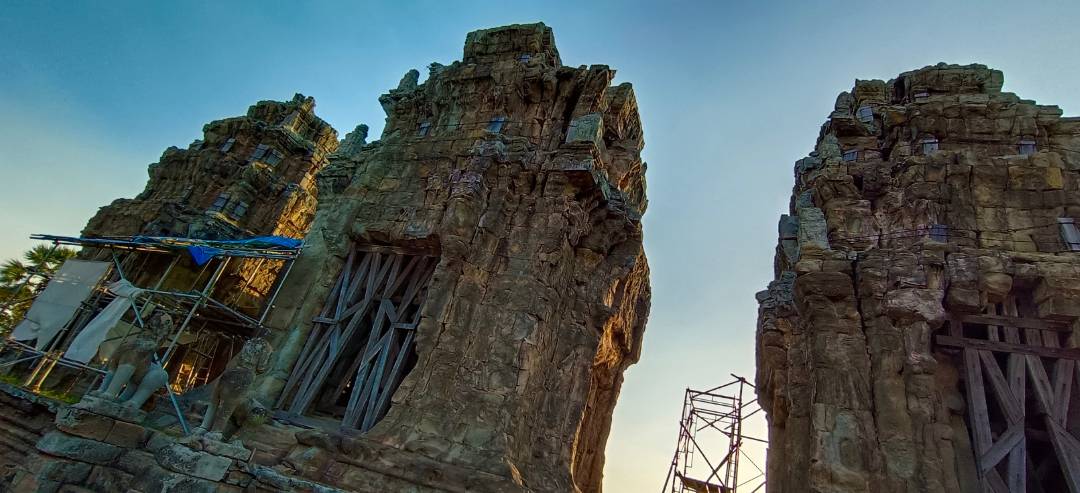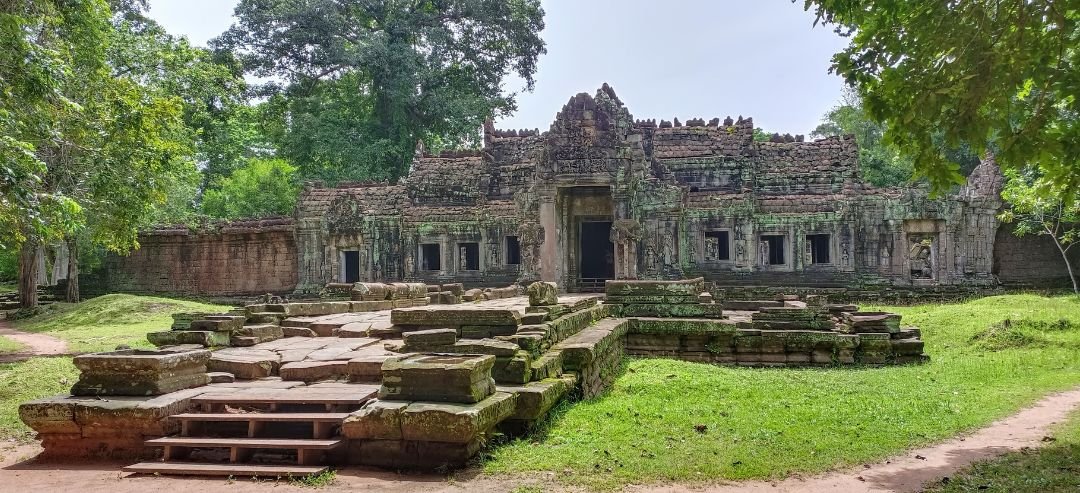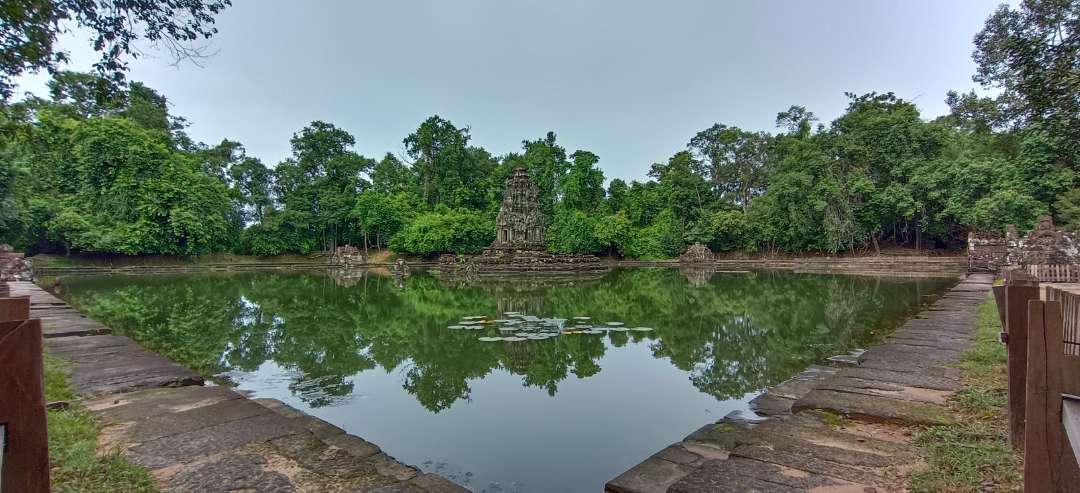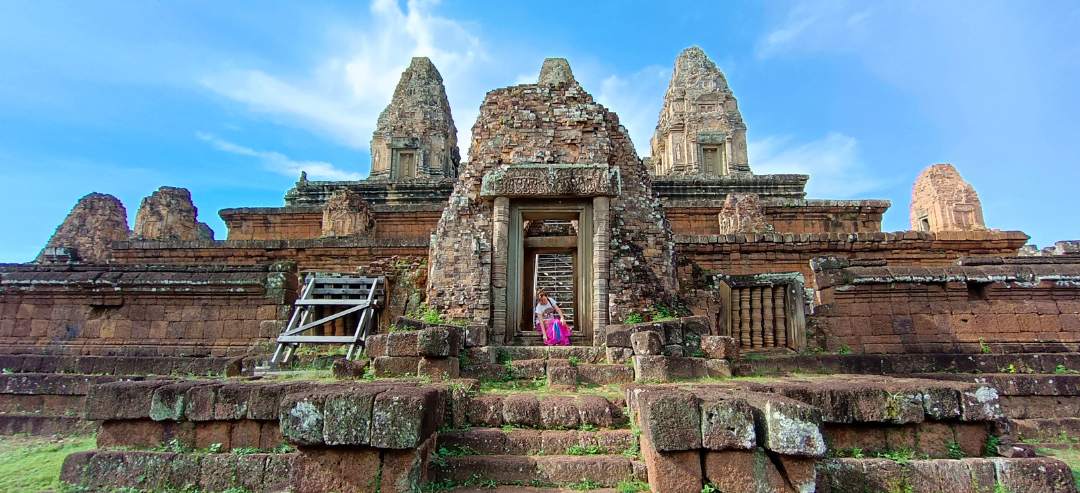First-Timer’s Guide to Siem Reap – Top Things to Know Before You Go
Siem Reap is a top destination for many travelers visiting Cambodia thanks to the world-famous Angkor Wat temples located just outside the city. As a first-time visitor, there are many things to know in advance to make the most of your Siem Reap trip.
Ready to unlock the magic of Siem Reap and live your Indiana Jones dreams exploring the magnificent Angkor temples?
In this comprehensive guide, we’ll cover all the key tips and information to prepare you for an amazing experience discovering Siem Reap and the Angkor temples.
Key Takeaways:
- Pick the best time to visit based on weather, crowds and your interests
- Sort out visas, transportation and currency well in advance
- Stay near lively Pub Street or quieter Wat Bo area as per preference
- Pack light, breathable clothes plus hat, sunscreen and walking shoes
- Try local cuisine like amok, lok lak, fresh spring rolls and palm juice
- Hire authorized guides to maximize insight into intricate temple artwork
- Respect dress codes and help preserve temples as a responsible tourist
Angkor Dreams & Beyond – Private Siem Reap 5 day tour of Temples, Villages, and Nature.
Best Time to Visit Siem Reap
Deciding when to visit Siem Reap depends on the weather patterns and your interests. Here’s an overview of the climate:
- Dry Season (November-March) – The most popular time to visit. Little rainfall, but temperatures can get very hot. Good for temple exploration. Busier and more expensive.
- Hot Season (April-May) – Extremely hot and dry. Temple visits can be uncomfortable. Lower hotel rates.
- Green Season (June-October) – Increased rain with temperatures cooling down. Temples are lush and green. Fewer crowds and lower prices.
- Peak Season (late December to mid January) – Holiday crowds push up hotel rates. Book well in advance.
Many travelers aim for the November to February timeframe when the weather is driest. But the green season can also be a good time to visit if you don’t mind some occasional rain.

Siem Reap Visa Requirements
Most nationalities need a tourist visa to enter Cambodia. Here are the main options:
- Visa on Arrival: Available at Siem Reap and Phnom Penh airports. $30 for 30 days. Easy and quick.
- eVisa: Apply online in advance and get approval letter. $30 for 30 days. Convenient but takes a few days.
- Visa Extension: Extend your stay up to 1 year in Siem Reap. $30-50 depending on duration.
Be sure to have a valid passport with at least 6 months validity and a passport photo ready for visa on arrival or extension.
Getting to Siem Reap
Siem Reap has an international airport with flights from major Asian hubs. You can also take buses or private transfers from Phnom Penh.
By Air
- Fly direct to Siem Reap from cities across Asia like Bangkok, Singapore, Kuala Lumpur, Hanoi, and more.
- Siem Reap International Airport is 10km from the city center. Taxis or tuk-tuks available.
By Bus
- Buses from Phnom Penh to Siem Reap take 5-6 hours. Book tickets in advance.
- Public buses are cheaper but less comfortable. Private buses like Giant Ibis have luxury options.
- Buses drop off at bus stations outside the city. Arrange a tuk-tuk or taxi into town.
By Private Transfer
- Hire a private car and driver for door-to-door transfer from Phnom Penh. More expensive but very convenient.
- Stops can be arranged along the way like at Kampong Thom.
- Transportation from Phnom Penh to Siem Reap.
Getting Around Siem Reap
Siem Reap city center is compact and walkable. For longer distances, tuk-tuks and taxis are inexpensive options.
- Tuk-Tuks – Iconic auto rickshaws to get around town. Bargain on the price before hopping in.
- Bicycle & E-bike Rental – Explore at your own pace. Hotels and shops rent bikes hourly or daily.
- Private Car & Driver – Hire a car and driver for the day to customize sightseeing.
- Taxi – Metered taxis available but ensure driver uses meter. More expensive than tuk-tuks.
- Public Bus – Very cheap but routes are limited.
For getting around the temple complexes like Angkor Archaeological Park, remork-motos (tuk-tuks) and bicycles are available for hire.
Where to Stay in Siem Reap
Siem Reap offers accommodation options from backpacker dorms to luxury 5-star hotels. Consider these factors when choosing where to stay:
- Location – Stay near Pub Street for nightlife or in quieter Wat Bo area. Hotels near the airport are farther from town.
- Amenities – Pick hotels with key amenities like a pool, fitness center, spa, restaurants, etc.
- Room types – Options like deluxe rooms, suites, connecting rooms for families.
- Budget/Luxury – Room rates vary widely from cheap budget to high-end luxury hotels.
- Reviews – Check reviews on sites like TripAdvisor to choose reputable properties.
- Guide to the most awarded hotels in Siem Reap for top options.
Money Tips and Currency
US dollars are widely accepted in Cambodia, though some local payment in the Cambodian riel is needed.
- ATMs are available in Siem Reap to withdraw dollars or riel using debit/credit cards.
- Major credit cards accepted at hotels, restaurants and shops. Cash preferred at local markets.
- Have small bills ($1, $5, $10) for tips, tuk-tuks and markets.
- Exchange desks at airport, banks and some hotels to exchange other currencies.
- Inform your bank/credit card company about your travel dates to avoid issues using cards.
- Carry a mix of USD cash, credit/debit cards, for payments.
Health and Travel Insurance
Take some simple precautions for a healthy trip to Siem Reap:
- No vaccinations mandatory but typhoid, hepatitis A/B recommended.
- Bring any prescription medicines and copies of prescriptions.
- Pack first-aid kit with remedies for digestive issues, allergies, pain relief etc.
- Buy travel insurance with health/medical coverage including emergency evacuation.
- Use mosquito repellent and appropriate clothing during temple visits.
- Drink bottled water only. Avoid raw/undercooked food.
- See a doctor about 4-6 weeks before travel for health advice.
Staying Safe in Siem Reap
Siem Reap is generally safe, especially in tourist areas. Take basic precautions:
- Beware of pickpockets around crowded temples and markets. Carry small valuables securely.
- Use hotel safes for passports, excess cash and valuables. Don’t carry too much cash.
- Only take tuk-tuks and taxis from reputable companies, especially at night.
- Stick to well-lit roads at night. Avoid quieter/deserted areas.
- Travel in a group when possible. Don’t wander off alone at temples.
- Insurance for travel throughout South East Asia for coverage.
- Always trust your instincts. It’s ok to decline persistently pushy vendors/guides.
What to Pack for Siem Reap & Angkor Temples
Pack lightweight, breathable clothing for hot days along with these essentials:
- Sun hat, sunglasses, sunscreen, umbrella
- Comfortable walking shoes with good grip
- Light scarf/shawl to cover shoulders at temples
- Small backpack or crossbody bag for daily essentials
- Mosquito repellent spray/wipes
- Hand sanitizer, wet wipes
- Extra water bottle to refill
- Camera, spare batteries/memory cards
- Phone charger and global adapter
Make sure clothes cover shoulders/knees for temple visits. Carry a sarong to use as a wrap.
Best Foods to Try in Siem Reap
Khmer cuisine and fresh tropical fruits are highlights. Try these top foods:
- Amok – Fish cooked with lemongrass, coconut milk and spices.
- Lok lak – Stir fried beef with black pepper sauce.
- Fish amok – Steamed fish mousse with curry and herbs.
- Fresh spring rolls – Rice papers wrapped around shrimp, herbs and noodles.
- Banh chiao – Steamed rice pancake with pork and egg.
- Khmer red curry – Spicy curry with beef, fish or vegetables.
- Mango sticky rice – Sweet sticky rice with fresh sliced mango.
- Sugar palm juice – Tapped from palm trees, this drink is nutritious and refreshing.
And don’t miss the vibrant local markets to browse spices, produce and snacks.
Siem Reap Itineraries & Planning
With so many temples and activities, planning your days in Siem Reap is essential.
- For a short visit, focus on the Angkor Wat Small Circuit over 1-2 days.
- With 3-4 days, add the Angkor Wat Grand Circuit plus activities in town.
- For 5+ days, take day trips to outer temples like the Beng Mealea Temple Tour and the countryside.
- Combine temple visits with activities like Khmer cooking classes, cycling tours or lake boat trips for varied experiences.
- Hire a knowledgeable local guide to get the most insight out of the complex temple artwork and history.
- Alternate active temple days with downtime at your hotel pool or spa. The temples can get exhausting in the heat!
- Plan ample time to wander and explore temples at your own pace. The area is vast with endless discoveries.
Top Temples and Attractions to Visit
Top Temples and Attractions to Visit in Siem Reap
The sprawling Angkor Archaeological Park contains the magnificent temple complexes and ruins dating back to the mighty Khmer Empire. With over 1,000 temples to explore, it can be overwhelming to decide which ones to prioritize.
Below are the absolute must-see temples and attractions for first-time visitors to Siem Reap:
Angkor Wat
The most renowned temple of all with impressive scale and extraordinary carved bas reliefs depicting Hindu mythology and Angkorian history. This 12th century temple is a prime spot to watch the sunset.
Key Highlights:
- Massive moated complex with iconic five towers
- Nearly 2,000 carved Apsara dancers on the walls
- Bas reliefs with over 11,000 sq meters of carvings
- Reflecting pools create a mystical atmosphere
Bayon Temple
Located within the ancient walled city of Angkor Thom, Bayon is famous for the giant stone carved faces representing the 54 towers. Built in the late 12th century.
Key Highlights:
- Over 200 massive smiling faces carved on the towers
- Bas reliefs depicting historical battles and scenes from everyday life
- A central mountain-temple plan with excellent views
- Intricate carvings and statues throughout
Ta Prohm
The photogenic jungle temple left largely unrestored, with gigantic tree roots and vines engulfing the crumbling towers. Offers a glimpse into the lost city.
Key Highlights:
- Spellbinding interplay of nature and ancient ruins
- Trees growing atop and through temple structures
- Long, dark and labyrinth-like corridors to explore
- Featured in Tomb Raider movie starring Angelina Jolie
Preah Khan
A huge 12th century temple enveloped by the forest, with long corridors, intricate carvings and many layered stone towers. Third largest complex after Angkor Wat and Bayon.
Key Highlights:
- Sprawling site with maze-like layout and many passageways
- Intricate stone carvings, lichen-covered walls, crumbling structures
- Buddhist and Hindu imagery combined
- Quieter setting with fewer tourists
Neak Pean
A small but unique temple sitting on an island surrounded by four connecting pools representing creation. “Entwined serpents” represent the cosmic ocean.
Key Highlights:
- Unusual circular temple with water features
- Statues of snakes and elephants line the pools
- Peaceful and pretty setting amidst nature
- Change of pace from larger temple complexes
East Mebon Temple
Built on a large artificial island, this 10th-century temple has excellent views of the surrounding countryside from its mountaintop perch.
Key Highlights:
- Towering centerpiece on an island reflect in the waters
- Intricate floral, animal and geometric carvings
- Panoramic vistas over the plains and Kulen Mountains
- Many hidden chambers and passages
Pre Rup
A pyramid-shaped temple ideal for enjoying stunning sunsets over the rice fields and palm trees. Glows magnificently in the late afternoon light.
Key Highlights:
- Harmonious blend of symmetry, balance and beauty
- Mountain-temple architecture rising in tiers
- Worship of both Shiva and Vishnu
- Less crowded and offers peaceful atmosphere
And there are so many more temples like Banteay Srei, Ta Keo, Baphuon and the Roluos Group waiting to be explored during your Siem Reap visit!
Guided Tours of Angkor Temples
Joining a guided tour helps you gain insight into the temple highlights. Various options are available:
- Private Tours – Hire a personal guide and driver for in-depth sightseeing at your own pace. Ultimate flexibility.
- Small Group Tours – More affordable option with a knowledgeable guide leading a small group.
- Tuk Tuk/Bike Tours – Hop between temples on a tuk-tuk or bike with a driver or guide. More active.
- Sunrise/Sunset Tours – Timed tours for optimal lighting at dawn or dusk at iconic temples like Angkor Wat sunrise.
- Specialty Tours – Choose tours centered on themes like photography, nature walks, food tasting etc.
Hiring licensed tour guides in Siem Reap ensures an informative experience and supports the local community.
Responsible Tourism at Temples
The Angkor temples are a World Heritage Site. Visitors should be respectful and help preserve the monuments.
- Observe temple dress codes – knees/shoulders covered, no beach attire. Sarongs available.
- Don’t touch or lean on fragile carvings and bas-reliefs.
- Watch footing on steep, uneven steps.
- Maintain silence inside temple interiors.
- Do not pick flowers or plants in temple grounds.
- Stay on marked trails only. Don’t climb on ruins.
- Hire authorized guides only. Avoid vendors without ID cards.
- Eco-friendly travel in Siem Reap and Angkor Wat to reduce your footprint.
By being mindful, we can protect these archaeological treasures so future generations can continue to admire the history and artistry.
After Visiting the Temples…
Aside from the main temples, there are many interesting experiences to enjoy in and around Siem Reap:
- Unwind at a spa or try a massage after long days sightseeing
- Shop for souvenirs, silks, silver and handicrafts in bustling markets
- Savor a chilled beer along Pub Street’s vibrant nightlife scene
- Visit local villages to experience daily Cambodian life
- See apsara dance performances showing traditional Khmer dance
- Take a cooking class to learn about local ingredients and cuisine
- Tour the countryside by bicycle, tuk-tuk or quad bike
- Watch the sun rise over the rice paddies from a balloon ride
- Spot wildlife, birds and butterflies at conservation centers
- Relax by the pool at your hotel and enjoy cocktail happy hours
With so much to do, it’s easy to fill any length trip to Siem Reap!
| Key Point | Benefit |
|---|---|
| Best time to visit | Pick optimal weather and avoid crowds |
| Visa requirements | Hassle-free entry to Cambodia |
| Transportation options | Easily get around Siem Reap |
| Where to stay | Choose ideal location and amenities |
| Money and currency tips | Handle payments stress-free |
| Health and vaccinations | Stay healthy and safe |
| Safety precautions | Avoid issues like theft and scams |
| Packing essentials | Be prepared for temple visits |
| Top foods to try | Savor delicious local cuisine |
| Itineraries and tours | See the highlights efficiently |
| Responsible tourism | Help preserve temples for future generations |
Plan an Amazing Siem Reap Trip
We hope this guide gives you plenty of tips and ideas to start planning your own adventure to Angkor’s ancient temples and vibrant Siem Reap.
With the right preparation and itinerary, you’re sure to have an incredible trip discovering Cambodia’s fascinating history, nature, cuisine and culture. Have any other questions? Just ask and we’re happy to help!


